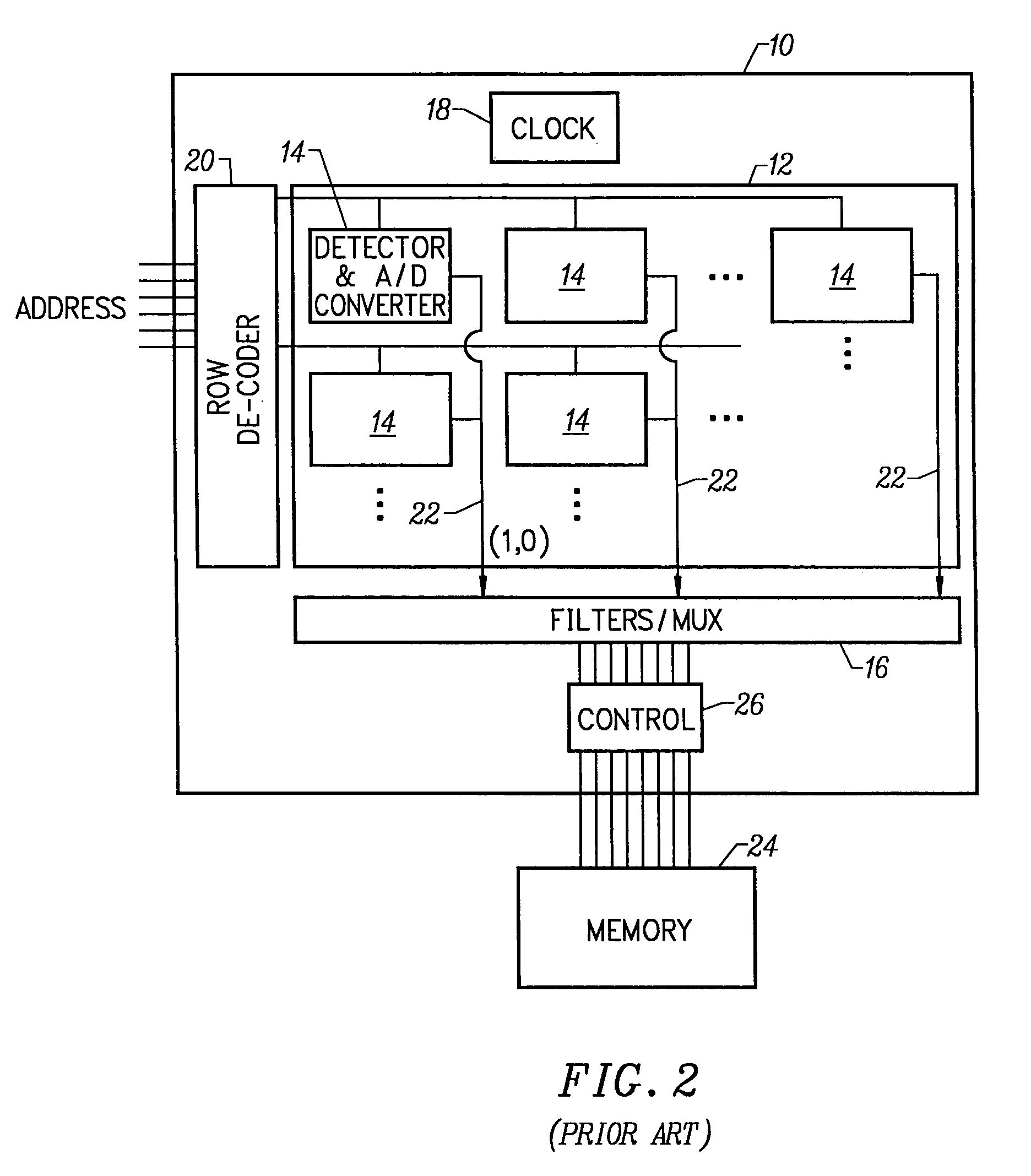Multiple sampling via a time-indexed method to achieve wide dynamic ranges
a dynamic range and multi-sampling technology, applied in the field of multi-sampling and image sensor architecture, can solve the problems of insufficient dynamic range of image sensor, inability to use digital cameras, and inability to capture scenes with both highlights and dark shadows, so as to avoid latency and extend the dynamic range of photodetectors
- Summary
- Abstract
- Description
- Claims
- Application Information
AI Technical Summary
Benefits of technology
Problems solved by technology
Method used
Image
Examples
Embodiment Construction
[0038]In the following detailed description of the invention, some specific details are set forth to provide a thorough understanding of the presently preferred embodiment of the invention. However, it should be apparent to those skilled in the art that the invention may be practiced in embodiments that do not use the specific details set forth herein. Well known methods, procedures, components, and circuitry have not been described in detail to avoid unnecessarily obscuring the invention.
[0039]In the following discussion, in references to the drawings like numerals refer to like parts throughout the several views.
[0040]FIG. 1A shows an image sensor or photosensitive chip 100 in which the invention may be practiced. The image sensor 100 may be used in an image capturing device (e.g. a digital camera) for either stationary or video photography, and produces digital image data. The photosensitive chip 100, which is typically fabricated on a substrate such as CMOS, comprises a pluralit...
PUM
 Login to View More
Login to View More Abstract
Description
Claims
Application Information
 Login to View More
Login to View More - R&D
- Intellectual Property
- Life Sciences
- Materials
- Tech Scout
- Unparalleled Data Quality
- Higher Quality Content
- 60% Fewer Hallucinations
Browse by: Latest US Patents, China's latest patents, Technical Efficacy Thesaurus, Application Domain, Technology Topic, Popular Technical Reports.
© 2025 PatSnap. All rights reserved.Legal|Privacy policy|Modern Slavery Act Transparency Statement|Sitemap|About US| Contact US: help@patsnap.com



